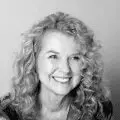

“The body is merely the visibility of the soul, the psyche; and the soul is the psychological experience of the body. So it is really one and the same thing.” – C. G. Jung
After months of sheltering in place, it was exciting to see people enjoying meals together in make-shift sidewalk cafés, masks and all. With restrictions beginning to lift, we found ways to adapt to safety concerns while maintaining our spirits. Then, suddenly, wildfires erupted all along the California Coast ignited by thousands of dry lightning strikes that lit up the night! Suddenly the air was filled with smoke that pushed us all back indoors again. This lasted for weeks.
In the midst, I was reminded that our journey through life is not simply psychological or spiritual; it is also concretely experienced and recorded in the body. As a result, lived experience, including trauma, is written into our physical bodies as well as into our minds. It literally shapes our nervous and hormonal systems, our musculature, posture and our movements.
Trauma, which is often defined as deep and lasting wounding resulting from overwhelming pain, can also sever our connection with our bodies. Sensations and emotions arise in the body and then make their way up through the ancient parts of the brain to the right hemisphere. This, neuro-psychoanalyst Allan Schore tells us, is the side of the brain that is primarily responsible for our emotional life.
Unable to draw on our bodies’ natural wisdom, or to reach out for needed support from others, we may feel orphaned, deflated, or mistreated; slow to trust, or powerless. Trauma also shapes the way we think about our bodies. All too often, we mistakenly see our bodies as the source of our wounding, and consequently despise them.
Despite the impact of trauma on our bodies, Western culture has, until very recently, paid little attention to the body when working with emotional trauma. However, we only have to look at common metaphors to realise that we implicitly know that our emotional life is deeply connected to the life embodied in our flesh and bones:
I need to get this off my chest. I’ve had to shoulder that secret for so long. I was beside myself. I felt torn in two directions. The ground was pulled out from under my feet. These are familiar examples. Or as James Joyce put it in The Dubliners, “Mr. Duffy lived a short distance from his body”.
Ancient healing practitioners saw the body as essential. And though the Greeks believed in developing the body, they split it off from abstract, cognitive, intelligence, which they elevated. Later, believing the body to be the repository of sin, Christianity encouraged people to strive to move beyond their ‘animal flesh’ and reside in spirit.
We will not heal trauma if we reside in spirit – quite the opposite. To heal trauma, we must bridge the dissociation between body and psyche, pay careful attention to what our body holds, and re-inhabit it. To achieve that we have to work directly with our bodies, rather than considering them to be second-class citizens when compared to our psyches.
If we speak our trauma story without attending directly to our bodies, we are at risk of perpetuating that dissociation from our bodies, rather than healing it. Many of the consequences of trauma are lodged in our bodies, and we simply can’t get at them through words.
As a person walks into my office, I begin with an assessment of what I observe and sense in their body. The body tells its own detailed story through posture, gesture, rhythm, gait, degree of sure-footedness, muscular tone, breath patterns and tissue color, use of space, and other elements. Each body can express how someone has learned to shape themselves to live with their life experience. Stanley Keleman, a long-time mentor and Somatics pioneer, states eloquently, “I have embodied my encounters with the world, and they have left their mark”. Our life stories are encoded in our body similar to the way the rings of a tree record its life story.
The body pulses with the oldest language and contains a deep historical memory. We engage in body-oriented practices to reconnect with our instincts, affirm our feelings, and heal. This promotes healthier relationships with our bodies, ourselves, other people, and the natural world. We come to know and love who we are and connect with a life force that is deeper and more meaningful than we have previously known.
We embrace life and are embraced by it.
Explore how you can foster a feeling of safety, resilience, and ease through bodily experience, natural movement, and creative arts. Tina Stromsted’s course Coming Home to the Body offers case examples and practical tools to help you reconnect with your deeper inner resources.

Tina Stromsted
Tina Stromsted, Ph.D., MFT, LPCC, BC-DMT, RSME/T is a Jungian psychoanalyst, Board Certified Dance/ Movement therapist, and Somatic psychotherapist and educator.
More Posts by Tina Stromsted